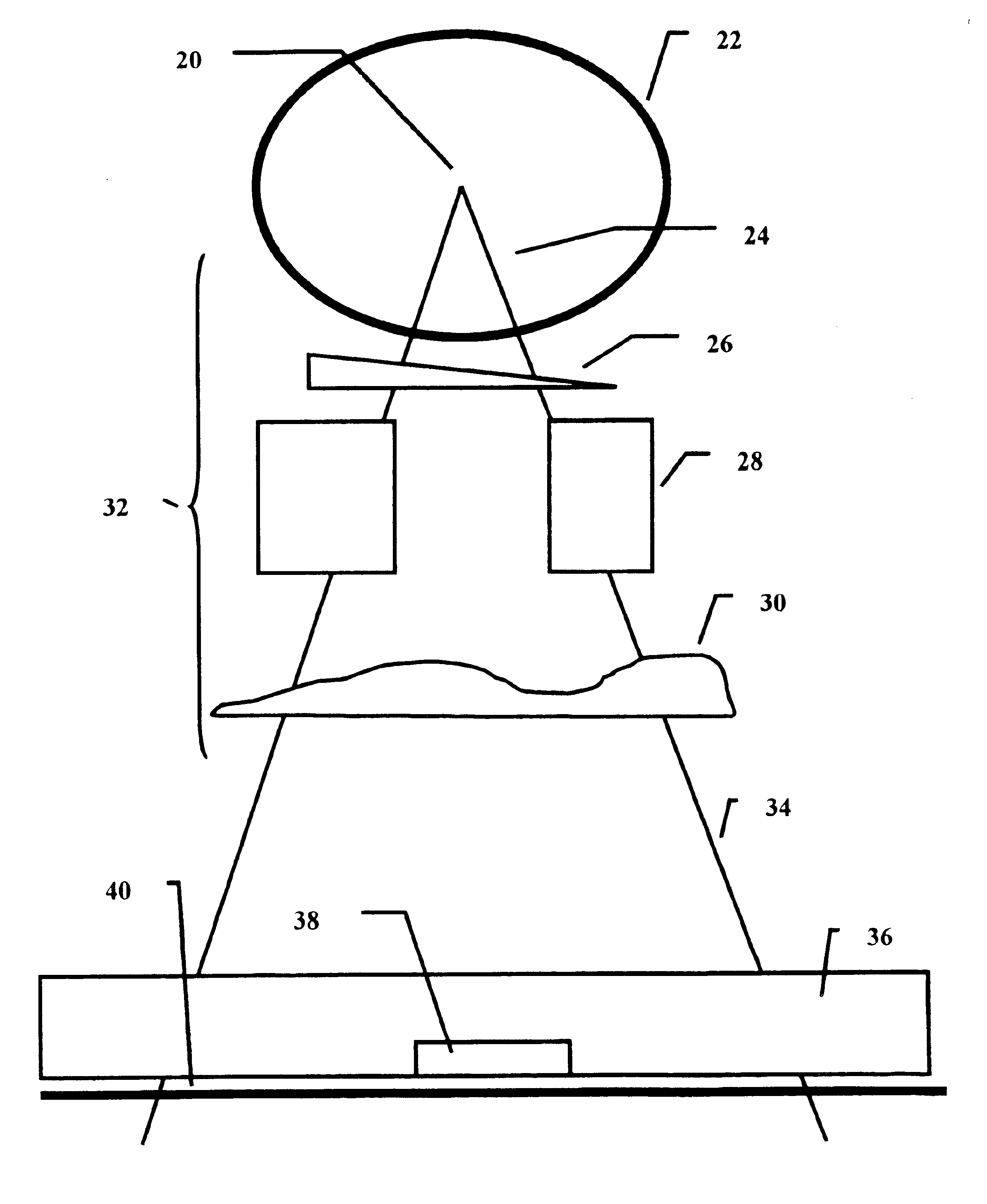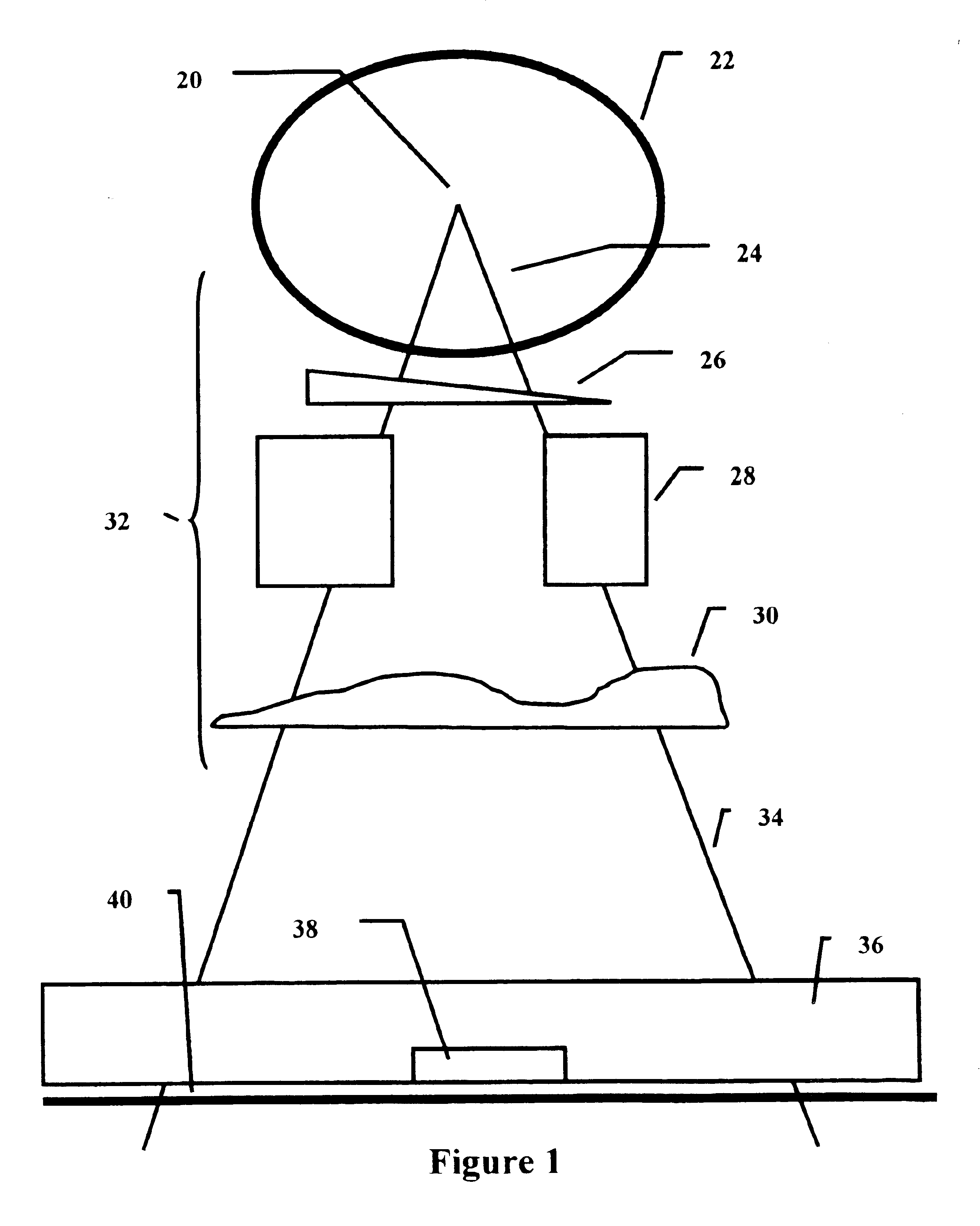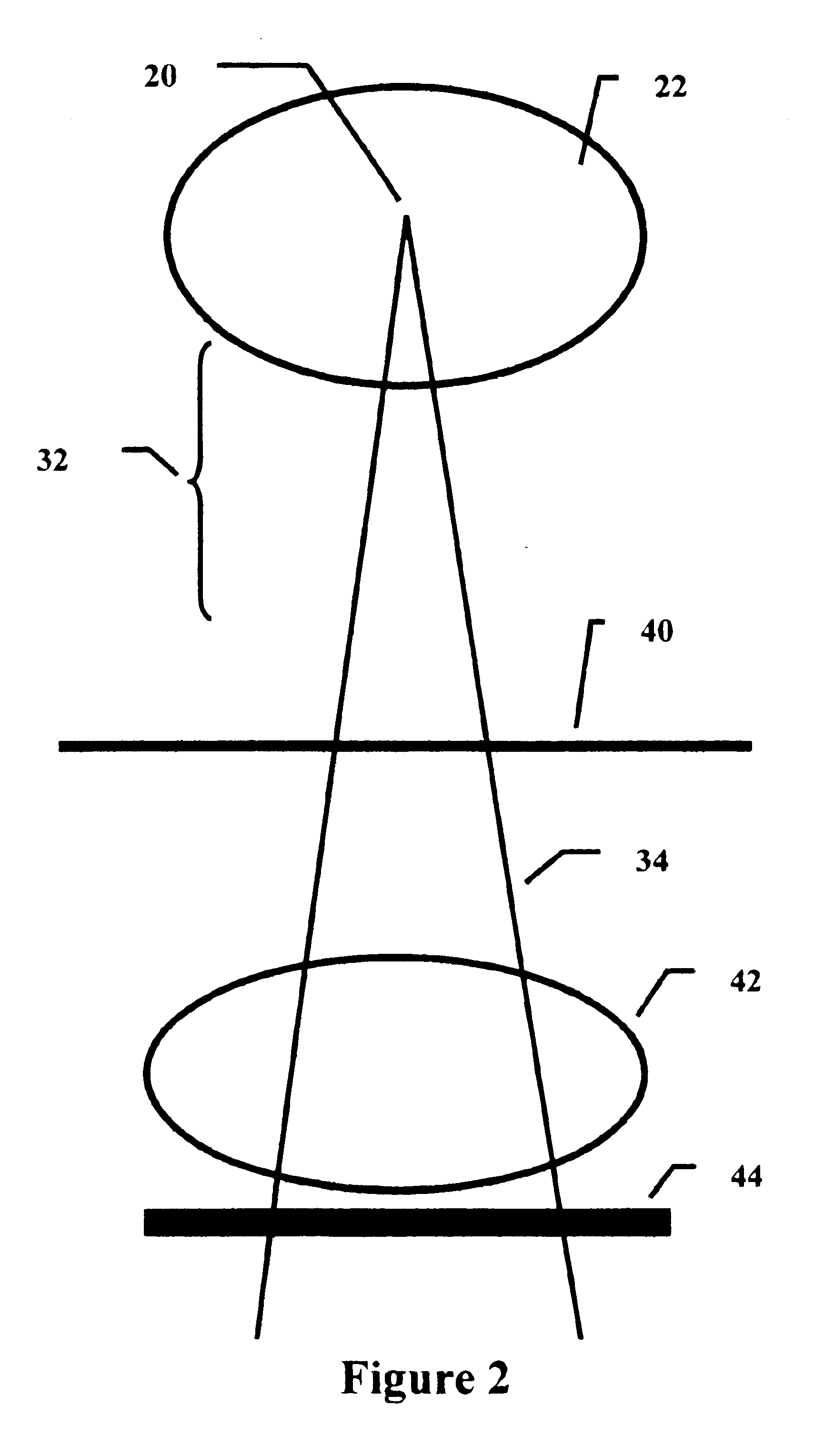Radiation therapy dosimetry quality control process
a technology of quality control and radiation therapy, applied in the field of radiation therapy dosimetry quality control process, can solve the problems of individual mistakes, errors in the final dose of the patient, and possible errors, and achieve the effect of achieving more accurate results
- Summary
- Abstract
- Description
- Claims
- Application Information
AI Technical Summary
Problems solved by technology
Method used
Image
Examples
Embodiment Construction
The process described below is for the purpose of verifying and testing the intended treatment plan to be applied to a patient using external beam radiation. It is assumed that a radiation therapy treatment plan has been developed employing current standard state of the art treatment planning techniques represented by 46 in FIG. 3. These techniques generally involve obtaining cross sectional images of the patient's body 42 in FIG. 2 with CT scanners or other means, and generating a treatment plan using computerized treatment planning systems provided for that purpose. CT is generally the imaging modality preferred due to its geometric accuracy and that CT pixel numbers can be converted to electron density needed by dose algorithms. MRI and mechanical means for obtaining cross sectional outlines are also sometimes employed.
This present invention consists of providing a more complete feedback mechanism whereby the dose to the patient volume can be assessed in 2d planes and 3d perspect...
PUM
 Login to View More
Login to View More Abstract
Description
Claims
Application Information
 Login to View More
Login to View More - R&D
- Intellectual Property
- Life Sciences
- Materials
- Tech Scout
- Unparalleled Data Quality
- Higher Quality Content
- 60% Fewer Hallucinations
Browse by: Latest US Patents, China's latest patents, Technical Efficacy Thesaurus, Application Domain, Technology Topic, Popular Technical Reports.
© 2025 PatSnap. All rights reserved.Legal|Privacy policy|Modern Slavery Act Transparency Statement|Sitemap|About US| Contact US: help@patsnap.com



